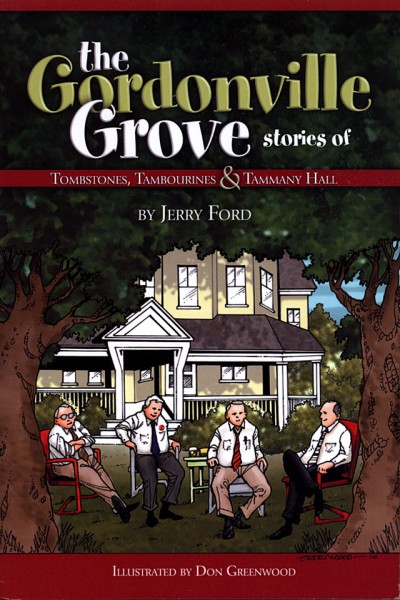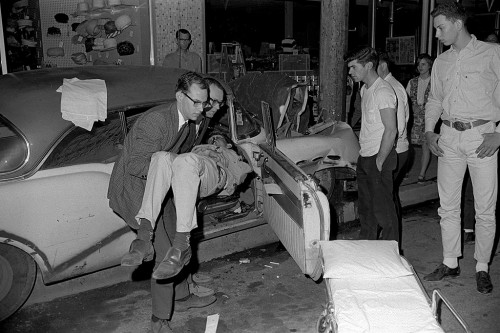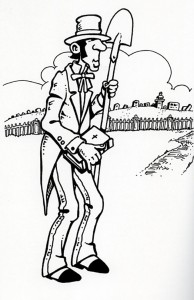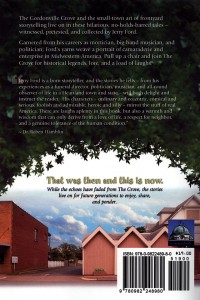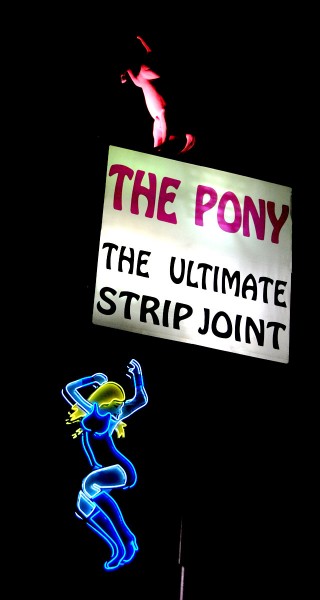 On our way over to Thebes this afternoon, we passed The Pony, a “gentleman’s club” that used to be the Purple Crackle. I commented that I didn’t think I had ever been in the Crackle or the old night club near it, The Colony Club.
On our way over to Thebes this afternoon, we passed The Pony, a “gentleman’s club” that used to be the Purple Crackle. I commented that I didn’t think I had ever been in the Crackle or the old night club near it, The Colony Club.
Mother said, “I’ve danced there.”
I assumed that meant that she and Dad had gone there in its heyday for a nice evening of entertainment, but I’ve watched enough lawyer shows to know that it’s a bad idea to ask a question that you don’t know the answer to. I let the topic drop and pretended an interest in the road construction along the way that has apparently stalled.
A typo made the Purple Grackle the Crackle
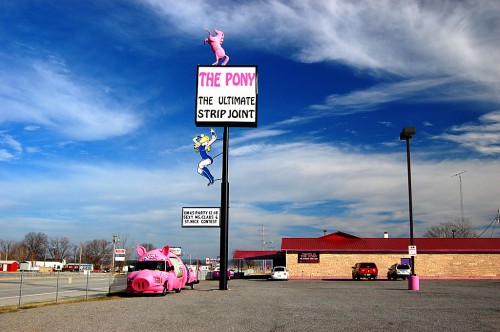 You can tell when you start calling up old newspaper stories that every rewrite pulls stuff out of what we called, in the old days, The Morgue. You can count on reading the same accounts and anecdotes every time an editor says, “We haven’t done a story about so-and-so in five or 10 years. See what you can dig up.” You hustle out to find some minor new peg, then go back to see Sharon Sanders in what’s now called The Library.
You can tell when you start calling up old newspaper stories that every rewrite pulls stuff out of what we called, in the old days, The Morgue. You can count on reading the same accounts and anecdotes every time an editor says, “We haven’t done a story about so-and-so in five or 10 years. See what you can dig up.” You hustle out to find some minor new peg, then go back to see Sharon Sanders in what’s now called The Library.
So, I don’t know if it’s true or not that the place was supposed to be named the Purple Grackle when it opened in 1939, but a 1979 story quotes owner Clyde “Bud” Pearce Jr. as saying “The club didn’t have a very extravagant beginning. It opened with a bottle in a box and a crap game. And the name — Purple Crackle — was a mistake. My father had named the club the Purple Grackle, after the bird, but I guess the crack of the dice led everyone to call it Crackle, and the name stuck.”
Since I have no direct knowledge of the facts, I’ll perpetuate the story like any good reporter.
Goodman, Ellington and Herman played up front
Up front was band music played by the greats: Benny Goodman, Duke Ellington and Woody Herman. Hometown boy Jerry Ford played the trumpet there when he was 15. The house band, Jack Staulcap’s Orchestra, made more than 850 appearances before the club’s format changed in 1979. The club was known for having some of the first and best Chinese food in the region.
In the back, legend has it, was gambling.
The landmark business transitioned to a “gentleman’s club” in 2006.
Clubs kept blowing up or catching fire
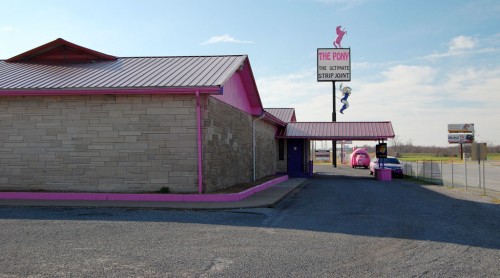 I can remember hearing people talking about mob activities in Southern Illinois. Night clubs and juke joints seemed to blow up and / or catch fire on a regular basis. Dad said you’d better keep your life insurance paid up if you were in the pinball machine business in Illinois.
I can remember hearing people talking about mob activities in Southern Illinois. Night clubs and juke joints seemed to blow up and / or catch fire on a regular basis. Dad said you’d better keep your life insurance paid up if you were in the pinball machine business in Illinois.
Missourian reporter Ray Owen mentioned that “The first bomb dropped on United States soil was in Williamson County [Illinois] when members of the Shelton gang flew over the Charlie Birger roadhouse and tossed three dynamite bombs at the Shady Rest. The only one to explode did little damage.”
One-Shot Frony came into The Missourian sporting a new telephoto lens one afternoon. “What are you going to do with that?” I asked him.
“I going to stand over here in Missouri and shoot corruption in Illinois,” he growled.
The Purple Crackle burned at least twice, with two men arrested for arson in a 1984 fire. A 1982 fire was blamed on a neon sign.
East Cape depended on Purple Crackle taxes
 Purple Crackle owner Bud Pearce was instrumental in the birth of East Cape Girardeau. In 1975, when the area reached a population of more than 400, he led the drive for incorporation.
Purple Crackle owner Bud Pearce was instrumental in the birth of East Cape Girardeau. In 1975, when the area reached a population of more than 400, he led the drive for incorporation.
His business was essential to the city. When it burned in 1982, the village board had to cancel plans for landscaping and equipping the city park due to the loss of tax revenue from the night club. Pearce estimated that he paid about $500 a month in sales tax to the village. When the club burned again in 1984, the tax roll took a similar hit.
Stories about the Crackle and East Cape
- Club fire costly to East Cape Villiage
- Southern Illinois’ gambling history
- Purple Crackle to become “gentleman’s club”
- Lueders’ photos of Purple Crackle from SEMO Special Collections
- Cape Girardeau’s “other side”
- Outreach ministry called Light in Darkness targets strip clubs
I’m sure some of you have stories that are more interesting than the ones from The Morgue. Just don’t share any about my mother dancing.

